Cacio e Pepe: The Simplicity of Italian Comfort
Few dishes embody the essence of Italian cooking quite like Cacio e Pepe—a recipe built on the beauty of simplicity. Just three main ingredients—pecorino Romano, black pepper, and pasta—come together to create a dish that’s greater than the sum of its parts. The creamy, peppery sauce clings to each strand of pasta, offering a bold yet delicate balance of flavors.
With roots in Rome, this dish was once a staple for shepherds, who carried dried pasta, aged cheese, and pepper as lightweight, non-perishable food. Today, it’s a favorite in homes and restaurants worldwide, proving that true culinary magic doesn’t require a long ingredient list—just quality ingredients and technique.
“Simplicity is the ultimate sophistication.” – Leonardo da Vinci
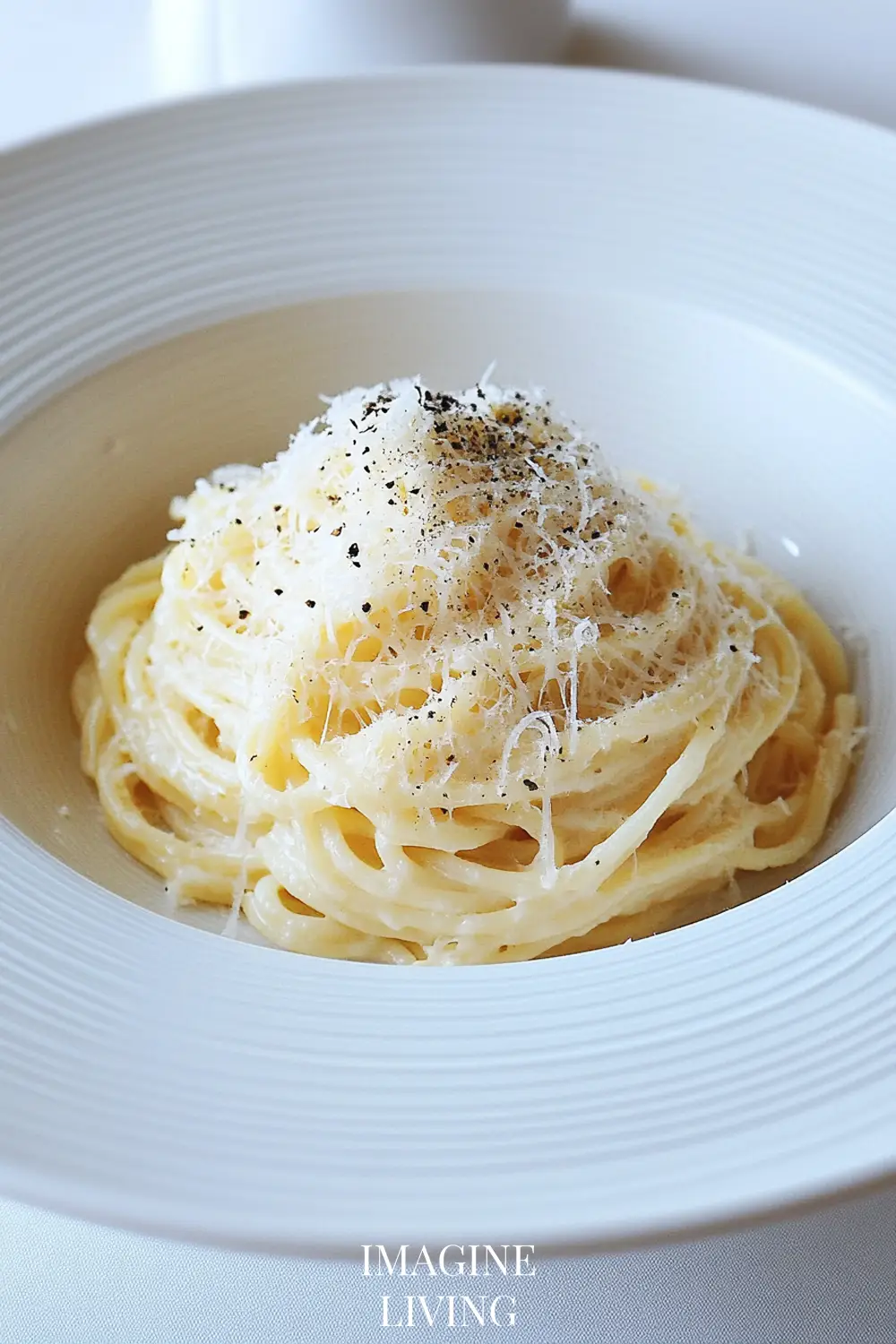
Why You’ll Love This Recipe
- Minimal Ingredients – Just a handful of pantry staples create an incredibly rich and satisfying dish.
- Quick and Easy – Ready in under 20 minutes, perfect for busy weeknights.
- Authentic Italian Flavor – A true Roman classic with bold, cheesy, peppery goodness.
- No Cream Needed – The sauce is made silky by technique, not heavy cream.
“Great cooking isn’t about complexity—it’s about making the most of what you have.”
Ingredients: The Essence of Cacio e Pepe
For the Pasta
- 12 oz spaghetti or tonnarelli
- 1 ½ teaspoons salt (for pasta water)
For the Sauce
- 1 ½ cups pecorino Romano, finely grated
- 1 tablespoon whole black peppercorns, freshly ground
- 1 cup reserved pasta water (as needed)
Equipment Needed
- Large pot for boiling pasta
- Large skillet or pan
- Tongs or pasta fork
- Fine grater for cheese
- Mortar and pestle (or pepper grinder)
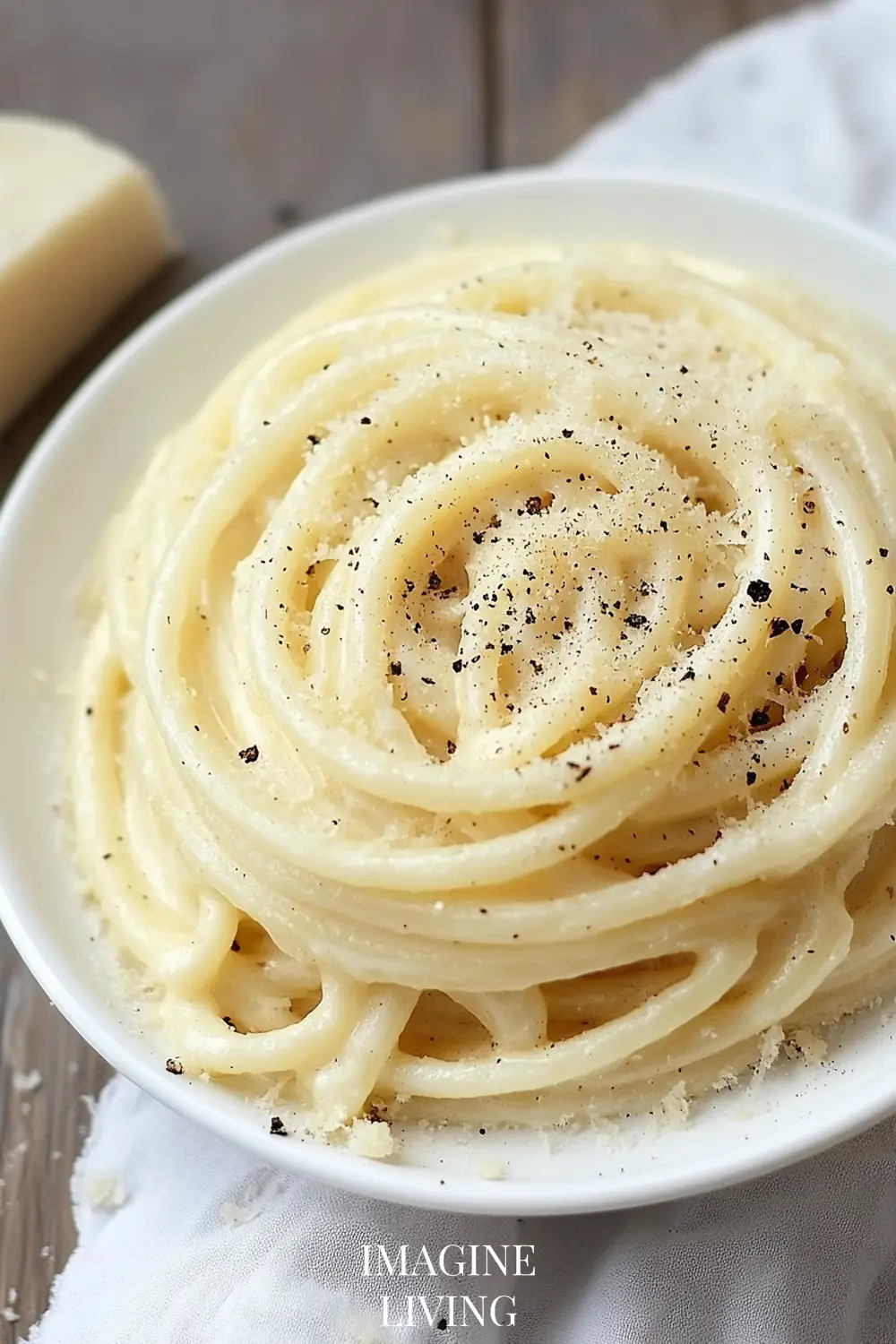
Step-by-Step Guide to Authentic Cacio e Pepe
Cook the Pasta
Bring a large pot of salted water to a boil. Cook the pasta until just shy of al dente, as it will finish cooking in the sauce.
Tip: Use less water than usual to concentrate the starch, which helps emulsify the sauce.
Toast the Pepper
In a large skillet over medium heat, toast the freshly ground black pepper for about 1 minute until fragrant.
Tip: Toasting the pepper releases its essential oils, deepening its flavor.
Create the Sauce Base
Add a ladleful of pasta water to the toasted pepper, swirling to create a fragrant base. Remove from heat and let cool slightly.
Tip: Letting the pan cool slightly before adding cheese prevents clumping.
Combine the Pasta and Sauce
Transfer the drained pasta to the pan, tossing quickly. Gradually add the grated cheese, stirring vigorously while adding small amounts of reserved pasta water. Continue tossing until a creamy sauce forms.
Tip: If the sauce seems too thick, add more pasta water; if too thin, toss longer to help it emulsify.
“Cooking is about passion, patience, and understanding your ingredients.”
Time Needed
- Prep Time: 5 minutes
- Cook Time: 10 minutes
- Total Time: 15 minutes
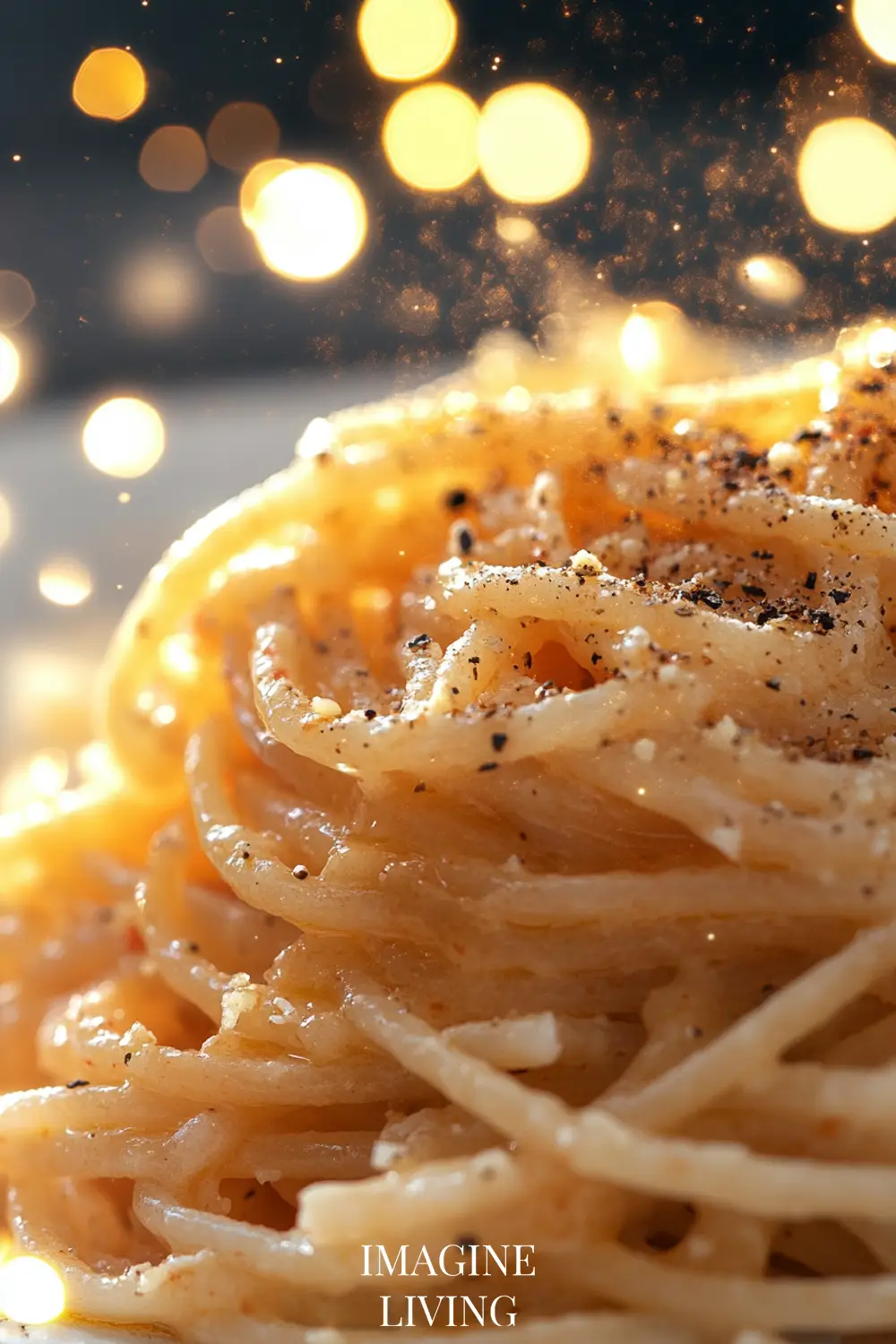
Pro Tips for the Perfect Cacio e Pepe
- Grate cheese finely – A powdery consistency melts more smoothly into the sauce.
- Use freshly cracked pepper – Pre-ground pepper lacks the depth of freshly crushed peppercorns.
- Don’t rush the emulsion – Stir and toss until the sauce clings perfectly to the pasta.
- Save extra pasta water – You can always add more, but you can’t take it away!
- Avoid overheating – Adding cheese to a too-hot pan causes it to clump instead of melting smoothly.
Creative Variations: Put a Twist on Cacio e Pepe
Truffle Cacio e Pepe
A drizzle of truffle oil or shaved truffles adds an earthy depth to the dish.
Tip: Use sparingly—truffle flavors are strong and can overpower the balance.
Cacio e Pepe with Lemon
A squeeze of fresh lemon juice brightens up the flavors.
Tip: Add lemon zest for an even more aromatic citrus boost.
Spicy Cacio e Pepe
A pinch of red pepper flakes brings gentle heat to complement the black pepper.
Tip: Toast the flakes with the pepper to enhance their smoky flavor.
Brown Butter Cacio e Pepe
Using browned butter instead of plain pasta water adds a nutty complexity.
Tip: Be careful not to burn the butter—golden brown is the goal.
Cacio e Pepe with Garlic
Sautéed garlic adds depth without overpowering the dish.
Tip: Use finely minced garlic and cook it lightly in olive oil before adding pepper.
“Tradition is not the worship of ashes, but the preservation of fire.”

Serving Suggestions
- A crisp arugula salad with lemon dressing balances the richness.
- A side of roasted vegetables like zucchini or asparagus complements the flavors.
- A glass of Italian white wine (Verdicchio or Trebbiano) enhances the dish.
Storage and Reheating
- Refrigeration: Store in an airtight container for up to 2 days.
- Reheating: Reheat gently with a splash of reserved pasta water over low heat, stirring constantly.
- Freezing: Not recommended—cheese-based sauces separate when frozen.
Common Mistakes to Avoid
Using Pre-Grated Cheese
Pre-grated cheese contains anti-caking agents that prevent smooth melting.
Tip: Always grate fresh pecorino Romano for best results.
Skipping the Pepper Toasting
Raw black pepper doesn’t release the same depth of flavor.
Tip: Always toast the pepper briefly to unlock its aroma.
Overheating the Sauce
Too much heat causes the cheese to seize and turn clumpy.
Tip: Remove the pan from heat before adding cheese.
Using Too Much Water
Too much pasta water dilutes the starchy emulsification.
Tip: Add small amounts at a time while stirring vigorously.
Not Tossing Enough
The sauce needs movement to emulsify properly.
Tip: Use tongs to continuously toss the pasta as you add cheese and water.
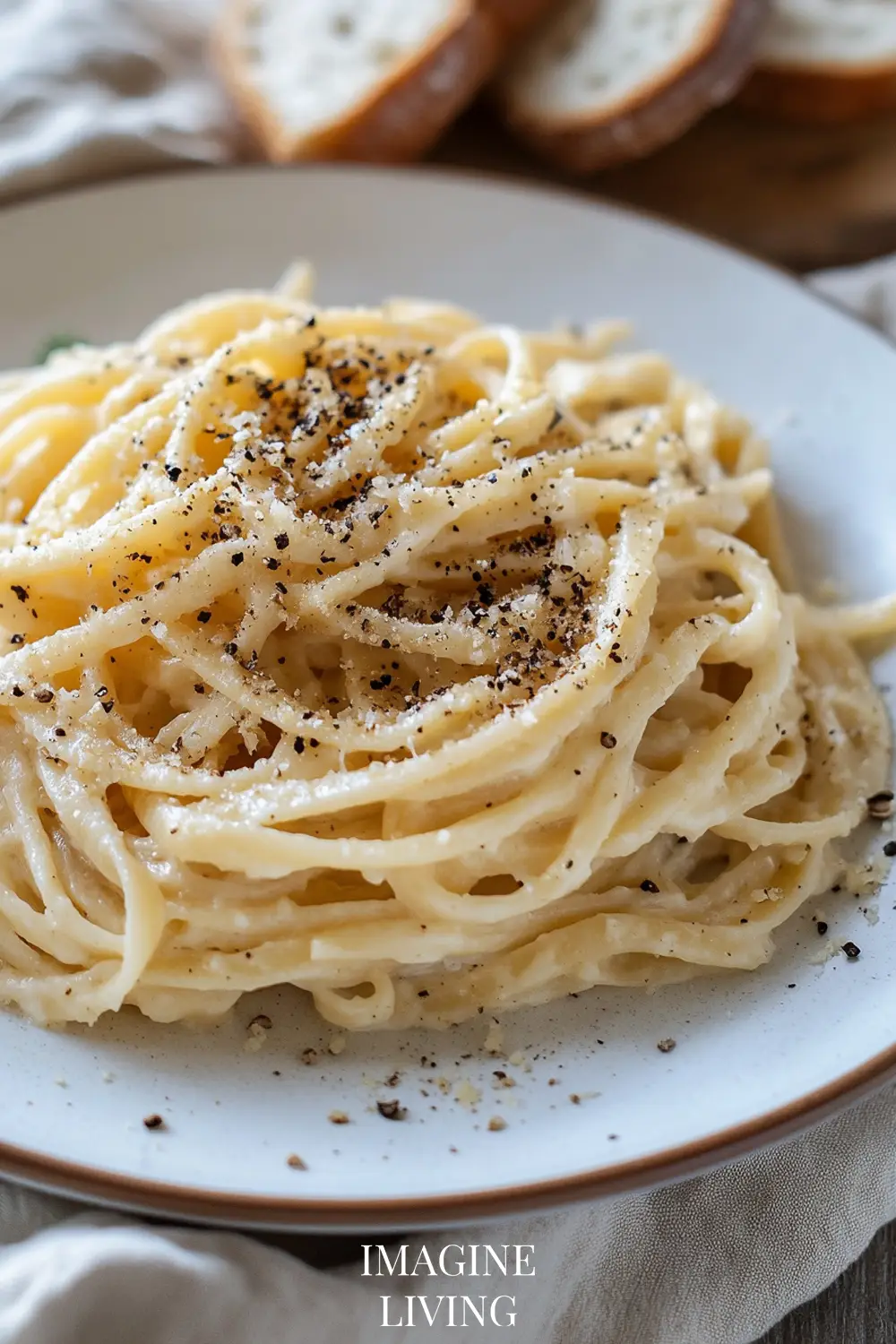
FAQs
Can I Use Parmesan Instead of Pecorino?
Pecorino Romano is traditional, but Parmesan can be used for a milder flavor.
What’s the Best Pasta Shape for Cacio e Pepe?
Tonnarelli is the Roman choice, but spaghetti or bucatini work well too.
Why Is My Cheese Clumping?
The pan might be too hot. Let it cool slightly before adding cheese.
Can I Make It Vegan?
Try using nutritional yeast and cashew cream for a dairy-free version.
How Do I Fix a Watery Sauce?
Toss the pasta longer to help the sauce thicken.
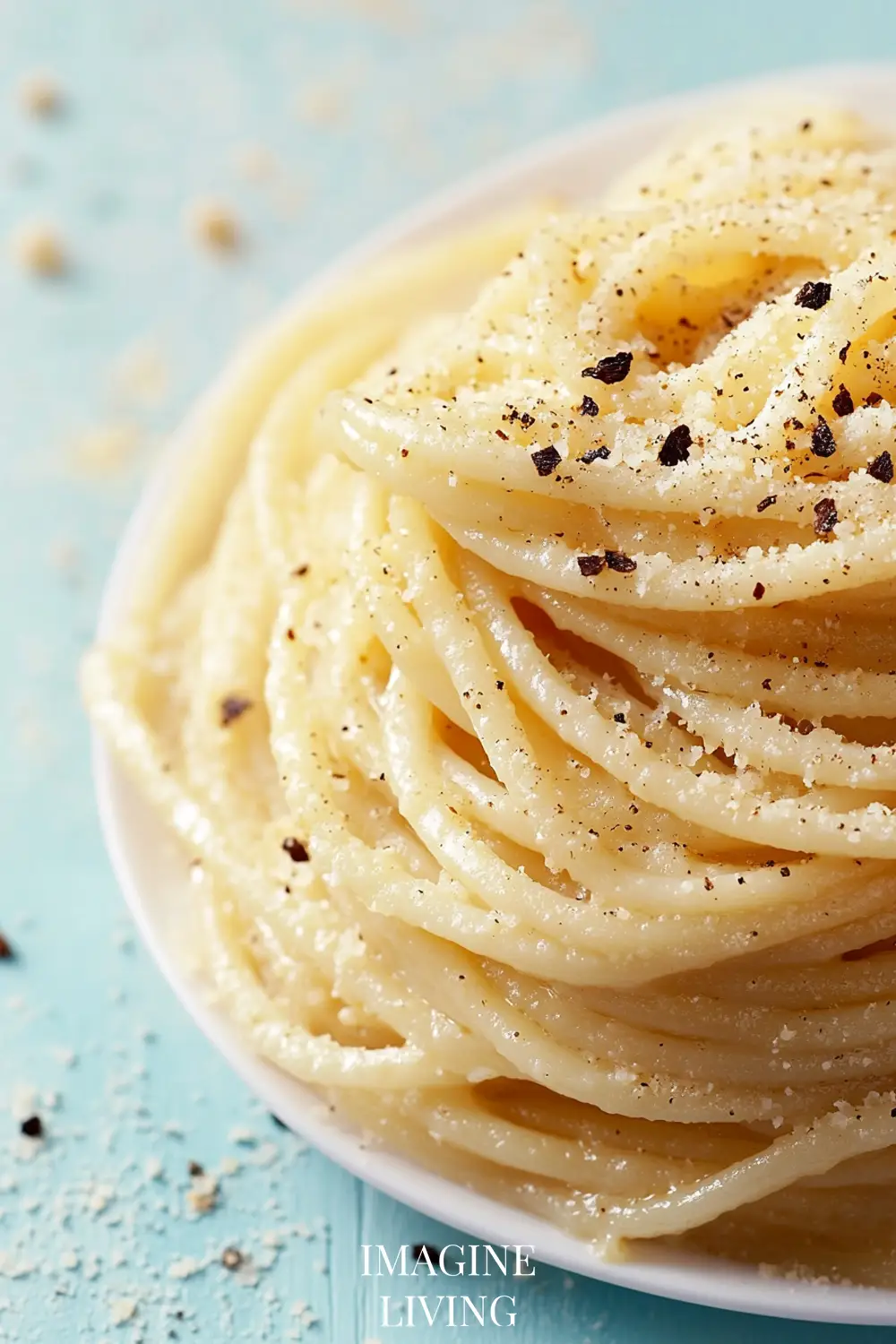
The Simple Elegance of Cacio e Pepe
Cacio e Pepe proves that true culinary magic comes from simple, high-quality ingredients and thoughtful technique. Whether you’re making it for a cozy weeknight meal or to impress guests, its bold flavors and silky texture never disappoint. One bite, and you’ll understand why this dish has stood the test of time.
“The secret to good food is simplicity and love.”
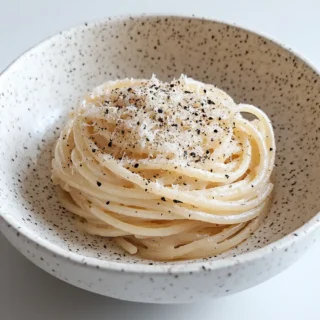
Cacio e Pepe
Equipment
- Large pot for boiling pasta
- Large skillet or pan
- Tongs or pasta fork
- Fine grater for cheese
- Mortar and pestle (or pepper grinder)
Ingredients
For the Pasta
- 12 oz spaghetti or tonnarelli
- 1 ½ teaspoons salt for pasta water
For the Sauce
- 1 ½ cups pecorino Romano finely grated
- 1 tablespoon whole black peppercorns freshly ground
- 1 cup reserved pasta water as needed
Instructions
Cook the Pasta
- Bring a large pot of salted water to a boil. Cook pasta until just shy of al dente.
- Tip: Use less water than usual to concentrate the starch for a silkier sauce.
Toast the Pepper
- In a large skillet over medium heat, toast the freshly ground black pepper for about 1 minute until fragrant.
- Tip: Toasting enhances the pepper’s depth of flavor.
Create the Sauce Base
- Add a ladleful of pasta water to the toasted pepper, swirling to create a flavorful base. Remove from heat and let cool slightly.
- Tip: A slightly cooler pan prevents cheese from clumping.
Combine Pasta and Sauce
- Transfer drained pasta to the pan, tossing quickly. Gradually add the grated cheese, stirring vigorously while incorporating small amounts of reserved pasta water.
- Tip: Toss continuously to emulsify the sauce and create a silky texture.
Notes
Avoid overheating the sauce, as high heat can cause the cheese to clump.
Serve immediately for the best texture and flavor.
Enjoy your Cacio e Pepe, the ultimate expression of simplicity and flavor in Italian cuisine!







